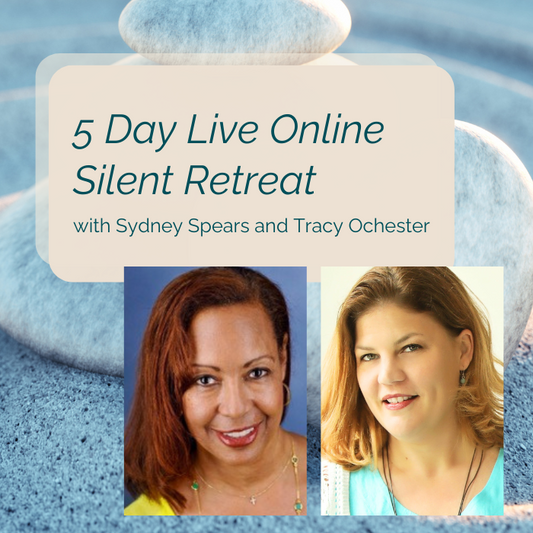
As a Zoom host and MSC Mentor, I often hear about how people are adjusting the MSC curriculum. I also field questions about when and how to decide to make an adjustment. While there are some adaptations that are important and skillful, beautiful actually, others seem to actually detract from the program.
At the root, most adaptations are based in a sense of discomfort in the teacher.
For example, one of our teachers, Greg Serpa, felt uncomfortable with the idea of asking Veterans to imagine each other as children in the Awakening Our Hearts (AOH) exercise. He understood this population well already as he is experienced with this population and he knew this would be a miss with them. He understood the point of this exercise, the underlying framework, and the intention.
Informed by this understanding he guided the exercise inviting them to imagine their partner as a veteran, instead of as a child, and he guided them to see the strengths and suffering of their partner as a veteran. He knew that this would engender common humanity and help these vets have the experience of loving-kindness and compassion for self and other. This was a beautiful and important adaptation. And it started with his feeling of discomfort.
I really trust this feeling of discomfort we as teachers sometimes have. It says to me that there is something there at which it is important to take a closer look.
Very commonly, too often, teachers conclude that the discomfort is due to the curriculum and, sometimes hastily, adjust the curriculum. Over the years I have really come to appreciate the design of the program and the sequencing of what is introduced and when. As Kristin notes, there are often many layers to why things ended up where they are. The curriculum has been so very well-honed over the course of thousands of participants. It works well for most people just as it is.
So what to do with the discomfort of the teacher if not changing the curriculum? First, it is helpful to pause and really understand the discomfort. What is it about, really? Then we might explore our options for dealing with the discomfort. I’ll say more about this in another article. For now, teachers might explore working with their own self-compassion practice while teaching. We should all be familiar with what comforts, soothes, and grounds us when we get pulled off balance while teaching. Of course, getting support from an experienced teacher or mentor can be really helpful. Often this brings a bit more wisdom to our compassion teaching.
At the heart of things, I find many teachers try to adjust the curriculum to adjust the activation level of the group, and therefore their own activation level too. I’d like to speak to this common and normal urge.
Over the years I have come to understand that while we ask each participant to manage their own activation, the teacher(s) are managing the activation of the group as a whole. Before changing the actual structure of the curriculum it is worth seeing if we might work with the delivery of the exercise.

It's important to carefully monitor the activation level of the group, modulating your delivery to keep participants within the "challenge" zone.
This is an area I appreciate more fully now than I did earlier in my teaching. When I lead AOH now, it is rare that I lead the whole exercise at the same speed and with the same tone. I am continually adjusting my delivery, not just with each group, but actually during the exercise itself in order to keep the group as a whole in the challenge circle. When I think it is too much on the safe side (which diminishes the power of the exercise and their likelihood of benefit) I slow down and warm up my tone so that they drop deeper. On the other hand, if it seems the group as a whole is more in overwhelm than challenge, I deliver the exercise more quickly and with a matter-of-fact tone. I find this works really well in making the exercise as effective as it can be. When groups are in overwhelm, the exercise is also less effective.
Of course, there are other areas where switching things out needs to happen. For example, as Chris points out, poems are just ink on paper until the person who voices them brings them to life. For that reason it is unwise to read poetry we don’t personally resonate with. Switching out the poem for one you do resonate with can be wise. When doing so, just keep in mind why the poem is inserted at this point and what is the underlying intention in putting the poem in that particular spot. What are we trying to illustrate or bring home with that poem? Let that guide you in your selection of another poem.
Don’t worry if you’re a bit unsure or uncomfortable. It took most of us many rounds of teaching to see the underlying wisdom of the scaffolding in the curriculum and to get more skillful in delivering the program. This is completely normal. Trust in the curriculum and in your own good heart. May we all continue to learn and grow as teachers!
 As a Zoom host and MSC Mentor, I often hear about how people are adjusting the MSC curriculum. I also field questions about when and how to decide to make an adjustment. While there are some adaptations that are important and skillful, beautiful actually, others seem to actually detract from the program.
At the root, most adaptations are based in a sense of discomfort in the teacher.
For example, one of our teachers, Greg Serpa, felt uncomfortable with the idea of asking Veterans to imagine each other as children in the Awakening Our Hearts (AOH) exercise. He understood this population well already as he is experienced with this population and he knew this would be a miss with them. He understood the point of this exercise, the underlying framework, and the intention.
Informed by this understanding he guided the exercise inviting them to imagine their partner as a veteran, instead of as a child, and he guided them to see the strengths and suffering of their partner as a veteran. He knew that this would engender common humanity and help these vets have the experience of loving-kindness and compassion for self and other. This was a beautiful and important adaptation. And it started with his feeling of discomfort.
I really trust this feeling of discomfort we as teachers sometimes have. It says to me that there is something there at which it is important to take a closer look.
Very commonly, too often, teachers conclude that the discomfort is due to the curriculum and, sometimes hastily, adjust the curriculum. Over the years I have really come to appreciate the design of the program and the sequencing of what is introduced and when. As Kristin notes, there are often many layers to why things ended up where they are. The curriculum has been so very well-honed over the course of thousands of participants. It works well for most people just as it is.
So what to do with the discomfort of the teacher if not changing the curriculum? First, it is helpful to pause and really understand the discomfort. What is it about, really? Then we might explore our options for dealing with the discomfort. I’ll say more about this in another article. For now, teachers might explore working with their own self-compassion practice while teaching. We should all be familiar with what comforts, soothes, and grounds us when we get pulled off balance while teaching. Of course, getting support from an experienced teacher or mentor can be really helpful. Often this brings a bit more wisdom to our compassion teaching.
At the heart of things, I find many teachers try to adjust the curriculum to adjust the activation level of the group, and therefore their own activation level too. I’d like to speak to this common and normal urge.
Over the years I have come to understand that while we ask each participant to manage their own activation, the teacher(s) are managing the activation of the group as a whole. Before changing the actual structure of the curriculum it is worth seeing if we might work with the delivery of the exercise.
As a Zoom host and MSC Mentor, I often hear about how people are adjusting the MSC curriculum. I also field questions about when and how to decide to make an adjustment. While there are some adaptations that are important and skillful, beautiful actually, others seem to actually detract from the program.
At the root, most adaptations are based in a sense of discomfort in the teacher.
For example, one of our teachers, Greg Serpa, felt uncomfortable with the idea of asking Veterans to imagine each other as children in the Awakening Our Hearts (AOH) exercise. He understood this population well already as he is experienced with this population and he knew this would be a miss with them. He understood the point of this exercise, the underlying framework, and the intention.
Informed by this understanding he guided the exercise inviting them to imagine their partner as a veteran, instead of as a child, and he guided them to see the strengths and suffering of their partner as a veteran. He knew that this would engender common humanity and help these vets have the experience of loving-kindness and compassion for self and other. This was a beautiful and important adaptation. And it started with his feeling of discomfort.
I really trust this feeling of discomfort we as teachers sometimes have. It says to me that there is something there at which it is important to take a closer look.
Very commonly, too often, teachers conclude that the discomfort is due to the curriculum and, sometimes hastily, adjust the curriculum. Over the years I have really come to appreciate the design of the program and the sequencing of what is introduced and when. As Kristin notes, there are often many layers to why things ended up where they are. The curriculum has been so very well-honed over the course of thousands of participants. It works well for most people just as it is.
So what to do with the discomfort of the teacher if not changing the curriculum? First, it is helpful to pause and really understand the discomfort. What is it about, really? Then we might explore our options for dealing with the discomfort. I’ll say more about this in another article. For now, teachers might explore working with their own self-compassion practice while teaching. We should all be familiar with what comforts, soothes, and grounds us when we get pulled off balance while teaching. Of course, getting support from an experienced teacher or mentor can be really helpful. Often this brings a bit more wisdom to our compassion teaching.
At the heart of things, I find many teachers try to adjust the curriculum to adjust the activation level of the group, and therefore their own activation level too. I’d like to speak to this common and normal urge.
Over the years I have come to understand that while we ask each participant to manage their own activation, the teacher(s) are managing the activation of the group as a whole. Before changing the actual structure of the curriculum it is worth seeing if we might work with the delivery of the exercise.
 It's important to carefully monitor the activation level of the group, modulating your delivery to keep participants within the "challenge" zone.
It's important to carefully monitor the activation level of the group, modulating your delivery to keep participants within the "challenge" zone.



